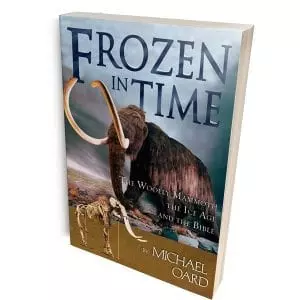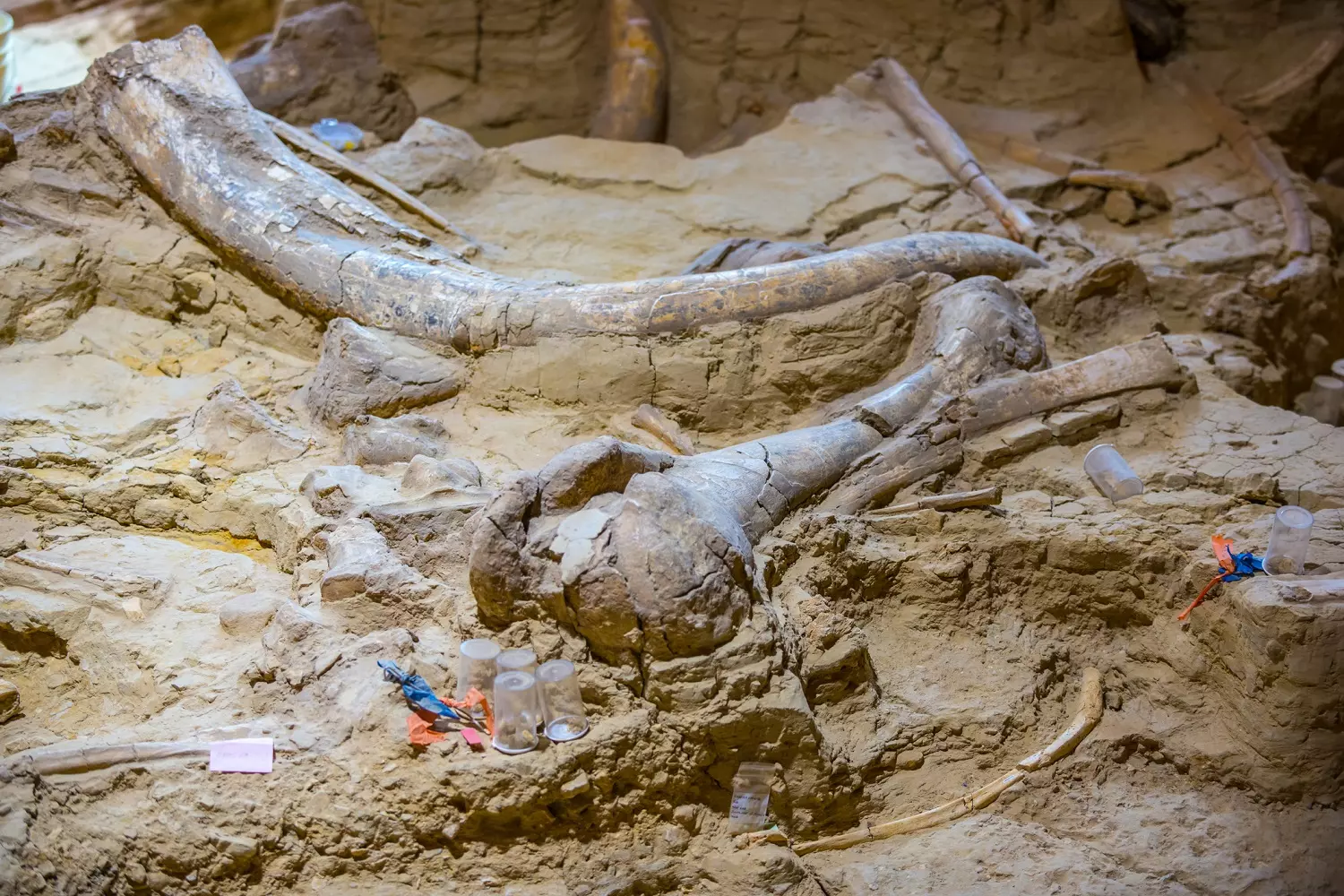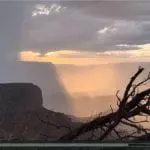[Originally published as California Life Science discussion]
CHAPTER 7: EVOLUTION OF THE SPECIES – EXTINCTION OF SPECIES, THE ICE AGE (PP. 245-246)
Your textbook describes climate change as the leading cause of extinction, and continues to say that it helped cause the extinction of the wooly mammoth. The material states that woolly mammoths had traits that helped them live in cold environments, such as long thick coats of hair, when the climate became warmer, the traits were no longer useful and therefore the woolly mammoth became extinct.
Only a portion of this statement is correct. Yes, climate change can cause the extinction of animals. But the textbook states that the environment the woolly mammoth lived in was a very cold one and when the temperature rose, the mammoth became extinct, which isn’t in line with the evidence that is found.
“Woolly mammoths are not the only fossil mammals found in the permafrost of Beringia. There are a wide range of other mammals, large and small, that accompany the mammoths…Many of these animals are grazers, implying that the paleoenvironment of Beringia was a grassland with a wide diversity of plants. This diversity of plants and animals points to a longer growing season with milder winters and very little permafrost” (Oard, 2000).
Oard is stating that these herbivores, including the woolly mammoth, could in no way survive in an environment that is covered with ice and extremely low temperatures because of the temperature itself, and the lack of food available to the animals.
This extremely cold environment is described in the uniformitarianism model, which is the basis of the geological time scale that includes the woolly mammoth environment described in the textbook. Oard states,
“Uniformitarian ice age models cannot explain the mammoths, or even the ice age itself” (Oard 2000).
A much better explanation of the ice age and woolly mammoth environments is through a post-catastrophic-flood environment, created by Noah’s flood. “During the Flood, warm water from the ‘fountains of the great deep’ would have produced a warm post-Flood ocean” (Oard, 2000). This warm post-Flood ocean would create much more evaporation than we observe today.
“More evaporation [means] warmer winters, more intense storms, and colder summers: The result? An ‘ice age’ (Morris 1993). So, because of this ice age created by the biblical flood of Noah, “the animals [such as the woolly mammoth] thrived [because] the temperatures were more equable with cool summers and milder winters. (Note that much of the continental land mass was never covered by ice sheets, even during the ice age.)…The animals became extinct at the end of the ice age because the climate changed to a more continental climate, with colder winters and warmer summers, and drier conditions” (Oard, 2000).
These major weather changes would create dust storms, cold weather, drought, and fires which are the reason the woolly mammoth and other animals became extinct after the ice age. Not because the weather warmed up and melted all the ice that the woolly mammoth had traits to survive in, as the textbook claims!
CHAPTER 7/8: EVOLUTION THEORY – FOSSILS, INDEX FOSSILS (PP. 223, 225, 236, 239, 276)
Your textbook goes over the topic of fossils in many different areas. According to the “Darwinian model that all life that has existed on Earth is one grand, biologically-related family [it] would predict that [the] fossil record should show [three features]” (Biddle, p. 106, 2014). These 3 features are:
- It should include ancestral forms in the lowest rocks. That is, the less-evolved root organisms.
- It should include intermediate forms; “life forms [that] gradually display new organs and other body designs in an uninterrupted, increasingly advanced chain” (Biddle, p. 107, 2014). “Darwin himself noted in The Origin of Species (1859), “The number of intermediate varieties, which formerly existed on earth [must] be truly enormous.” (Biddle, p. 109, 2014).
- The fossil record should include to support Darwin’s theory are divergent forms, which are “increasing numbers of more and more genetically complex diverse organisms [that] occupy the higher geological strata.” Upon closer inspection, however, the fossil record actually falsifies all three evolutionary model predictions. Instead, the fossil record biologically, paleontologically, and geologically supports all biblical creation criteria without exception” (Biddle, p. 107, 2014).
On top of all this, “observational science has shown that fossils and rocks can form rapidly: The idea of a young earth, [which is indicated by this information] is not compatible with evolution” (Patterson, p. 106, 2009). “Fossils in pristine condition require that the animal or plant was buried rapidly; therefore, index fossils, rather [than] indicating a living environment over time, are nothing more than things buried quickly and suffocated under huge amounts of sediments transported by the ocean” (Biddle, p. 83, 2014).
So in order for something to become fossilized, it must be buried quickly after death! “A catastrophic flood such as Noah’s Flood can certainly provide a possible explanation” (Biddle, p. 55, 2014).
Many fossils are found in what are called fossil graveyards. “These fossil graveyards contain a mixture of many different kinds of fossils that have been transported by large volumes of water. The bones are typically fragments that have been broken apart during the transportation process as enormous mounds of mud and sediment were shifted during the Flood.
By studying some of these fossil graveyards, we can gather clues that will demonstrate that the Flood was in fact catastrophic and worldwide, as stated in Genesis 7:20–23:
The waters rose and covered the mountains to a depth of more than fifteen cubits [at least 22 feet]. Every living thing that moved on land perished—birds, livestock, wild animals, all the creatures that swarm over the earth, and all mankind. Everything on dry land that had the breath of life in its nostrils died. Every living thing on the face of the earth was wiped out; people and animals and the creatures that move along the ground and the birds were wiped from the earth. Only Noah was left, and those with him in the ark. (emphasis added)
If this passage in Genesis is true, we would expect to find billions of dead things buried in rock layers laid down by water all over the Earth. And this is exactly what we find! In fact, such evidence exists all over the world” (Biddle, p. 53-55, 2014).
There have been no fewer than 200,000,000 fossils found so far throughout the world and yet “the fossil record bears witness that there are
- No ancestral roots—no “primitive” organisms between microfossils and visible life,
- No transitional trunk—no anatomically-intermediate creatures with structurally-transitional features (e.g., partially-evolved organs, limbs, etc.), and
- No divergent branches—no new phyla being genetically descended from less-evolved “common ancestors” (Biddle, p. 115, 2014).
“Evolution has had its chance—over 150 years and millions of fossils—to prove itself, and it has come up wanting. The theory has been weighed, tested, measured, and falsified. Aren’t 200 million opportunities and one and one-half centuries enough time to answer the issue that confounded Darwin himself?” (Biddle, p. 113, 2014).
Works Cited:
- Morris, John D. “Was There Really an Ice Age?” Acts & Facts 22.8 (1993): n. pag. Institute for Creation Research. Web. 25 June 2014.
- Oard, Michael J. “The Extinction of the Woolly Mammoth: Was It a Quick Freeze?” Journal of Creation 14.3 (2000): 24-34. Answers in Genesis. Web. 25 June 2014.
- Bassett, David V. “Do Fossils Show Evolution?” Creation V. Evolution. Ed. Daniel A. Biddle. N.p.: Xulon, 2014. 106+. Print.
- Patterson, Roger Todd. “Unlocking the Geologic Record.” Evolution Exposed. Petersburg, KY: Answers in Genesis, 2009. 106. Print.
- Sigler, Roger. “The Age of the Earth, Dating Methods, and Evolution.” Creation V. Evolution. Ed. Daniel A. Biddle. N.p.: Xulon, 2014. 83. Print.
- Wingerden, Van, and Daniel A. Biddle. “Did Noah’s Flood Really Happen?” Creation V. Evolution. Ed. Daniel A. Biddle. N.p.: Xulon, 2014. 53-55. Print.
Digging Deeper:
Videos
- https://answersingenesis.org/media/video/science/mammoth-and-ice-age/
- https://answersingenesis.org/media/video/science/ice-age-bible-explains/
- Fossils and the Flood Video- https://answersingenesis.org/media/video/science/fossils-and-the-flood/
- Flood Stories Video- http://thatsafacttv.com/2012/08/03/episode-12-flood-stories/
- Order of Fossils Video- https://answersingenesis.org/media/video/age-of-the-earth/fossils-rock-record-long-ages/
- Was there really a global Flood? Video- https://answersingenesis.org/media/video/bible/really-noahs-ark-flood/
- Fossils and the Flood: What’s the Connection? Video- https://answersingenesis.org/media/video/bible/fossils-flood-connection/
- Fossil’s with Cells Video- http://thatsafacttv.com/2012/08/03/episode-16-dino-cells/
Articles
- https://answersingenesis.org/environmental-science/ice-age/the-extinction-of-the-woolly-mammoth-was-it-a-quick-freeze-9849/ – Oard
- https://www.icr.org/article/was-there-really-ice-age/ – Morris
- https://answersingenesis.org/fossils/how-are-fossils-formed/experiment-fast-formed-fossils/
- https://answersingenesis.org/the-flood/global/worldwide-flood-evidence/
- https://www.icr.org/article/where-are-fossils-found/
Resources:
- Woolly Mammoth Book by Michael Oard- Frozen In Time








This article does a great job of summarizing the main ways evolution is falsified by the fossils. But, the second haft of the article almost contradicts the first. It correctly states that to become a fossil animals must be quickly buried and goes on to explain how Noah’s Flood provided the water and mud to accomplish this. How do we know the “Ice Age” fossils are not actually from the Flood? Secular science needs the Ice Age in order to explain these fossils, because they do not believe in the Flood. They actually believe there were many great extinctions through out earth’s history, the Ice Age being the last. The Bible says there was one. Why do most creation scientist claim two, the Flood and the Ice Age?
Thank you for your comment, Carla. If you want the people of Genesis Apologetics to directly respond to your question, you’ll want to contact them at their website: https://genesisapologetics.com/ .
I can, however, respond as someone who follows the research and reasoning of the YEC community on both what the Bible claims and leaves open for us to discover from the evidence around us.
The Bible never tells us there was only one extinction event (and no one claims the ice age was as devastating as the flood). To assume the Scriptures exclude the impact an ice age would have is an argument from silence. This is an unwise approach to biblical interpretation.
Whether there was an ice age such as we see depicted in movies and described in secular literature is not something the Bible addresses either negatively or positively with any clarity. Instead, it is an area we look to the world around us for clues to decipher. And many geologists see ample evidence of an ice age to support their belief.
While there are some points the Bible makes so clear we are forced to accept God’s testimony or rebel, many others are left open to us to ponder and study from the world around us. This is what makes science so exciting. It is good to question our assumptions, but I would caution anyone who builds a hypothesis about the past and then claims the Bible’s silence is in support of their idea that this is treading on dangerous ground.